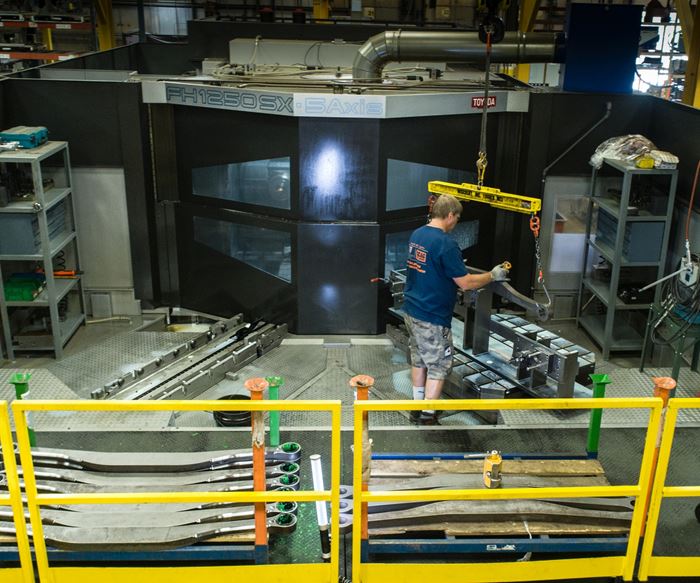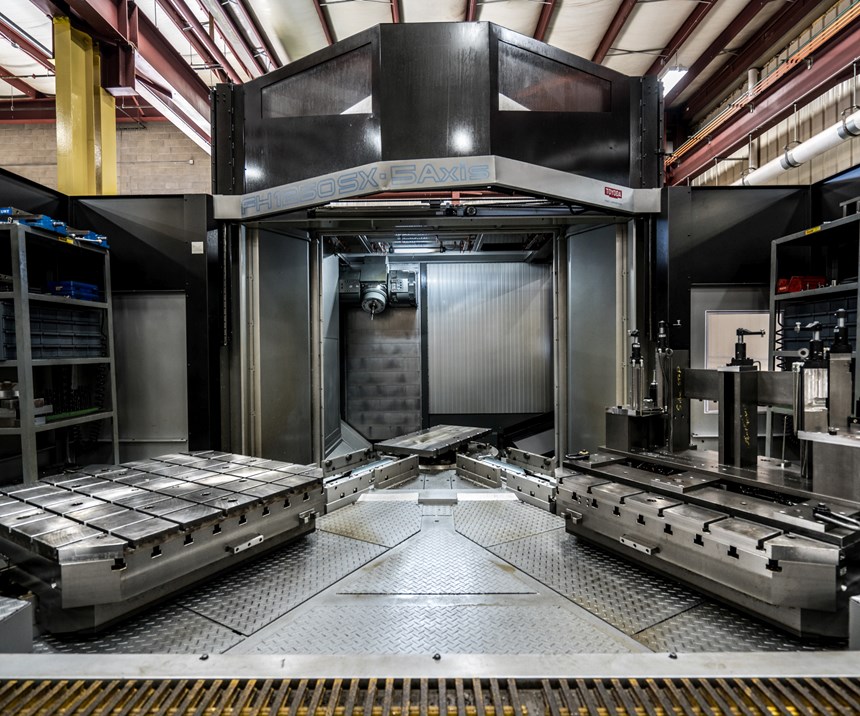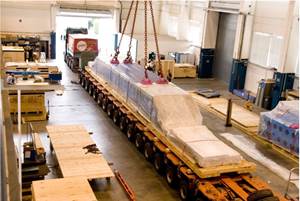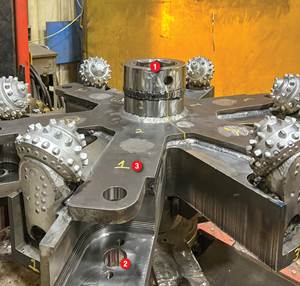For Large-Part Machining, Five-Axis Capabilities Prove Essential to Staying Competitive
Metalcraft of Mayville’s old milling machine for large parts failed just when the company began seeing increased pressure to take on projects requiring more flexibility and capabilities. Two five-axis HMCs from Toyoda helped the company stay in step with the trend.
Metalcraft of Mayville, Wisconsin, is known by many as the manufacturer of Scag Power Equipment brand commercial lawn mowers; but at the company’s 230,000-square-foot West Bend facility, staff also maintain large-scale welding and fabrication operations for other OEM customers like John Deere, Oshkosh Truck, Lockheed Martin and Caterpillar. As large-part contracts became available, adding greater machining capabilities over just traditional fabrication services proved to be crucial to remain competitive.
At the point of decision, Metalcraft was using an old milling machine that was neither keeping up with customer demand nor machining to required tolerances. But things got worse: The machine went down for eight months, prompting the shop to pay a premium for outsourced work that could have been done in house. A $140,000 quote for repairs to get the operation up and running again sent Metalcraft looking for alternative machines.
The company decided to buy a pair of Toyoda FH1250SX-5Axis horizontal machining centers. Despite primarily machining large weldments, the machines’ five-axis capabilities halved the number of operations and setups required by the traditional three- and four-axis processes. These machines — designed for complex, tight-tolerance, large-part machining — would also meet the demands of Metalcraft’s high-profile clients for equipment capable of handling large workpieces with maximum flexibility.
“We cut a bunch of different, mostly tougher, steel alloys made to withstand falling objects. Running these parts through the Toyodas was actually the easiest and most profitable,” says John Grotelueschen, Metalcraft’s machining manager who supervises the operation of over 20 large CNC machining centers. The Toyoda machines come equipped with either a 10,000- or 15,000-rpm integral tilting spindle with rapid feed rates of 1,260 ipm (32 m/min.) on the X and Y axes and 1,654 ipm (42 m/min.) on the Z axis. “The installation of these machines couldn’t have gone any smoother,” Mr. Grotelueschen adds. “I have been in the industry for over 30 years and overseen upwards of 20 installs. This was the easiest install I’ve ever been involved with.”
Right off the bat, Metalcraft was running jobs for five different clients with the Toyoda machines. The FH1250SX-5Axis was able to handle the size and scope of work while maintaining target lead times. “For Caterpiller we are manufacturing large, front assembly radiator guards — cutting the metal, welding it, building the assembly and re-machining the full assembly,” Mr. Groteleuschen explains, “and for Deere, we make the tie rod for the four-wheel-drive tractors. It is almost 10 feet long, and we flame cut, machine, paint and send it back to them. We also manufacture their cab mounts. We need the accuracy of these machines. These parts are a couple thousand dollars each.”
Adding machining as a core competency, Metalcraft got a leg up on its competition, especially as customers began pushing for “the full production package.” One of these requirements is high-speed machining, which the shop was not able to do before buying the Toyoda machines. By speeding up machining and eliminating setups thanks to five-axis and five-sided machining capabilities, Metalcraft has dramatically reduced cycle times and rework.
For Mr. Grotelueschen, the machines’ accuracy supports these benefits: “The accuracy on the machines is fantastic. We need accuracy when we are working with high-cost parts,” he says. “The Toyodas are very precise and consistent in production. They easily do what we couldn’t achieve by other means.”
“There are tools that have been on [the machines] since the beginning that I haven’t had to change, which is unusual for a machine of that size and application.”
Another benefit Mr. Grotelueschen notes has to do with tool life, which is another area in which overall costs can be affected. “There are tools that have been on [the machines] since the beginning that I haven’t had to change, which is unusual for a machine of that size and application,” he says. In short, he says, Metalcraft is replacing fewer tools, less often. With the FH1250SX-5Axis’s range of five-axis capabilities, the company no longer needs expensive specialty tools for specific jobs.
Metalcraft may have started as a fabrication and welding company, but the Toyoda HMCs have helped the company diversify: a task many shops are increasingly facing.
Related Content
ESOP Solidifies Culture of Continuous Improvement
Astro Machine Works’ ESOP rewards all employees when the shop does well, inspiring many toward continuous improvement as Astro expands its capabilities.
Read MoreHeavy Engineering: The Complex Logistics of Moving Large Machine Tools
One of our fascinations with large-format machine tools has little to do with their capabilities, but everything to do with the logistics involved with getting them up and running. Here’s how one of the world’s oldest builders of giant machine tools tackles the challenge.
Read MoreThe Cut Scene: The Finer Details of Large-Format Machining
Small details and features can have an outsized impact on large parts, such as Barbco’s collapsible utility drill head.
Read MoreRead Next
The Cut Scene: The Finer Details of Large-Format Machining
Small details and features can have an outsized impact on large parts, such as Barbco’s collapsible utility drill head.
Read MoreObscure CNC Features That Can Help (or Hurt) You
You cannot begin to take advantage of an available feature if you do not know it exists. Conversely, you will not know how to avoid CNC features that may be detrimental to your process.
Read More3 Mistakes That Cause CNC Programs to Fail
Despite enhancements to manufacturing technology, there are still issues today that can cause programs to fail. These failures can cause lost time, scrapped parts, damaged machines and even injured operators.
Read More













.png;maxWidth=300;quality=90)














